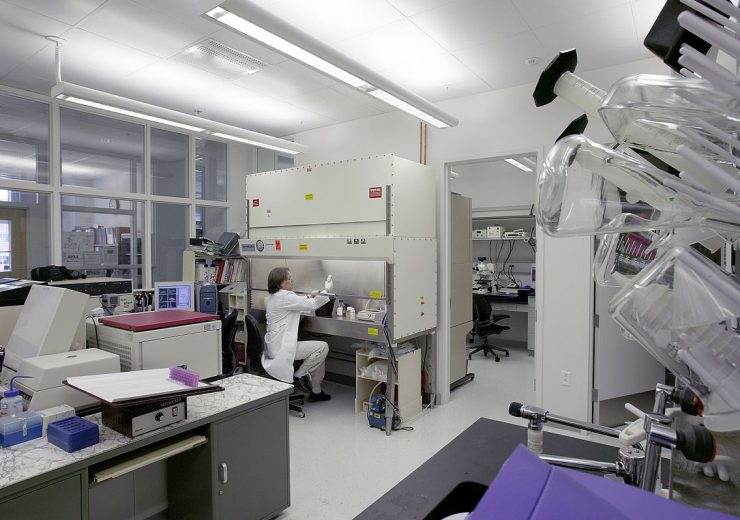The MY01 Continuous Compartmental Pressure Monitor is a sterile, single-use device

FDA Life Sciences Laboratory I in Building 64. (Credit: The U.S. Food and Drug Administration)
MY01 Inc. is on a mission to empower healthcare professionals with the ability to pre-empt severe medical conditions, improving patient outcomes. MY01 inc. today announced U.S. Food and Drug Administration 510(k) clearance for the MY01 Continuous Compartment Pressure Monitor with full Bluetooth capabilities.
MY01’s Continuous Compartment Pressure Monitor uses a proprietary and innovative technology to deliver a highly reliable, accurate continuous pressure microsensor directly within the muscle.(2)
The MY01 Continuous Compartmental Pressure Monitor is a sterile, single-use device. The easy-to-use nature of the MY01 device allows organizations to allocate their healthcare resources to focus on more important activities. Only the MY01 device provides quick, reliable and continuous pressure measurements to aid in diagnosis of Compartment syndrome.(2)
Acute Compartment Syndrome (ACS) is a true orthopaedic emergency.(3) Trauma is the most common cause of ACS.(4) Following trauma, swelling may build up causing an increase in muscle pressure leading to ACS.(5) Rapid diagnosis followed by prompt surgical decompression via a fasciotomy is critical to achieving favorable patient outcomes.(6) In the US, it is estimated that there is a prevalence of 500,000 cases per year that could be at-risk of Compartment Syndrome.
Some important considerations related to Acute Compartment Syndrome:
1.Compartment syndrome is a potentially devastating and relatively common complication of fractures about the knee and tibial shaft (OTA 33,41,42).(7)
2.Delayed diagnosis and treatment (late fasciotomy) can have catastrophic consequences for the patient with 5.4% of all cases leading to amputation.(8) Amputations carry a lifetime cost of $600,000 and significant legal liability risk.(9)
3.In some cases, because of current deficiencies with diagnosis, the physician will conduct prophylactic fasciotomies. These prophylactic fasciotomies leave patients with large scars that carry their own set of complications, adding unnecessary costs due to added length of stay.(10)
a. On average, performing a fasciotomy on a tibia fracture patient will increase their length of stay by 8 days.(11)
b.Fasciotomies can result in risk of surgical site infection to 25%.(12) Surgical site infection is the third most costly type of healthcare-acquired infection (HAI) with an estimated added cost of $23,466 per case.(13)
4. On average, an Acute Compartment Syndrome lawsuit rules in favor of the patient 33-55% of the time with damages awarded for litigation averaging over $1,550,000.(14-16)
As clinicians and hospitals evaluate options for cost-effective management of Acute Compartment Syndrome, it is important to employ new methods to detect Acute Compartment Syndrome or to rule it out in a timely fashion.(1) MY01 Continuous Compartmental Pressure Monitor provides the necessary immediate and timely information to aid physicians to monitor at-risk patients.(1) Treatment delays and misdiagnosis are preventable with the MY01 device. The American Academy of Orthopaedic Surgeons (AAOS) recognizes the use of continuous intra-compartmental pressure monitoring (Perfusion > 30mmHg) to assist in ruling out ACS.(4)
“I am so excited to be involved with the design of the MY01 device because it’s easy to use and meets a need identified by almost all orthopaedic surgeons. I’m really enjoying using it in my hospital,” said Ed Harvey, M.D., an orthopedic surgeon based in Montreal (Canada) and the Co-Founder of MY01.
